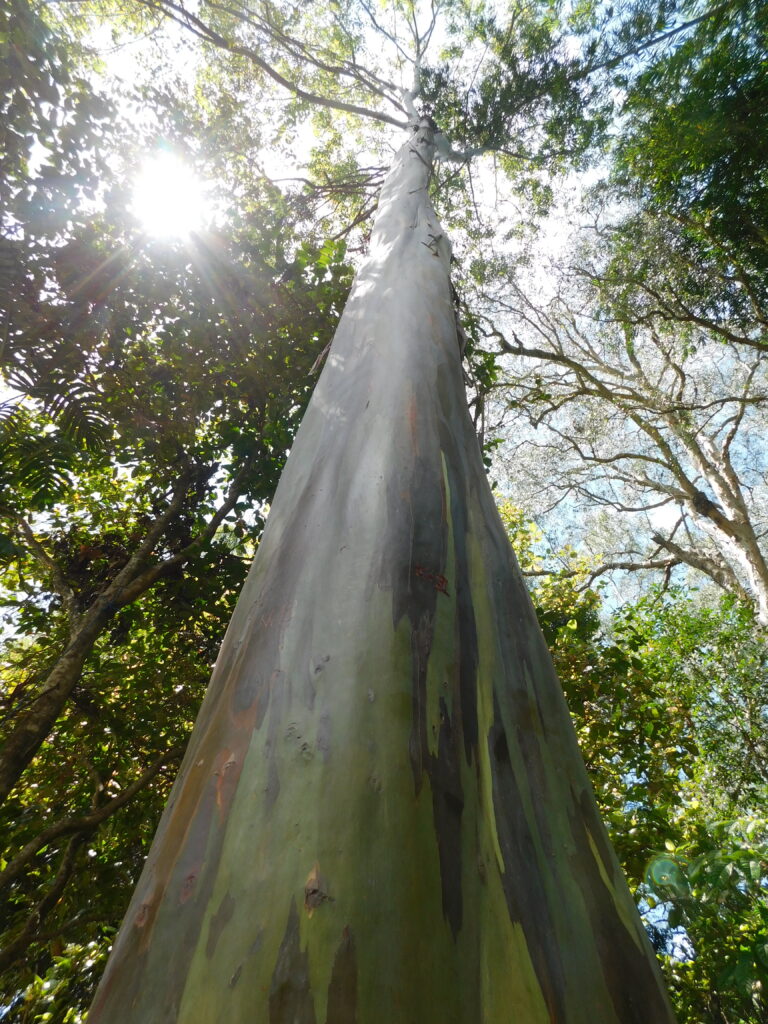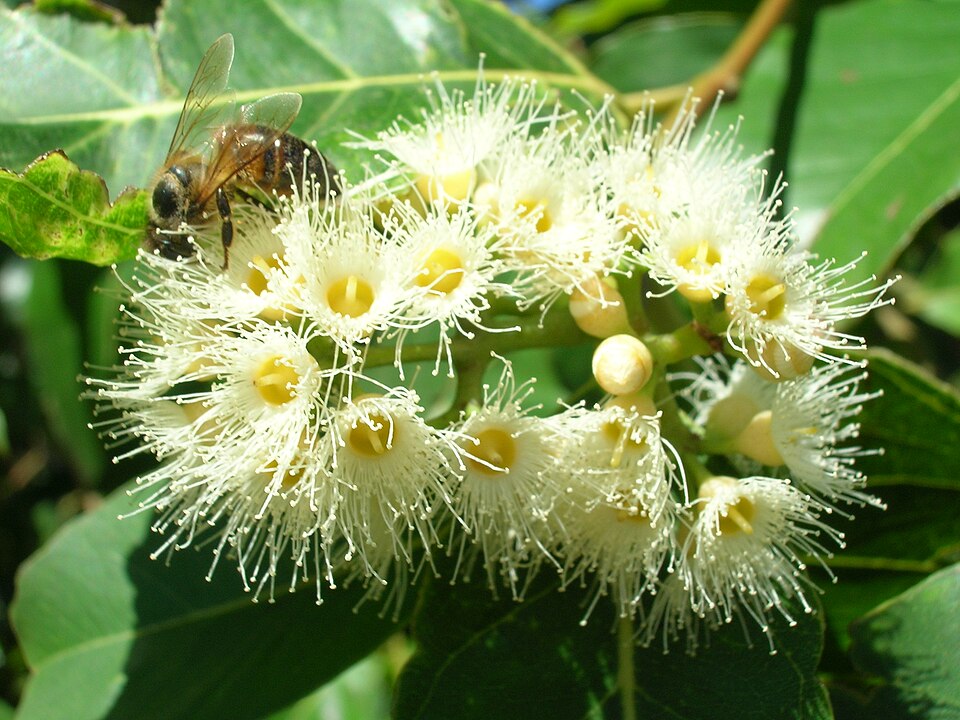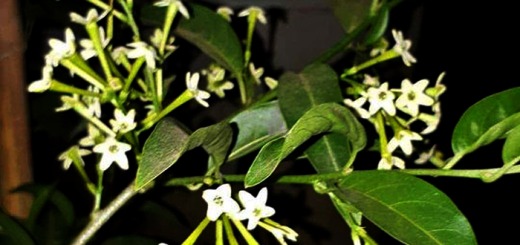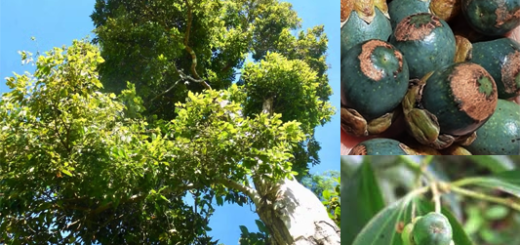Rainbow Eucalyptus – Nature’s Colorful Masterpiece

When you think of vibrant colors in nature, your mind might immediately go to sunsets, coral reefs, or blooming flowers. However, there’s one particularly stunning natural wonder that doesn’t get nearly enough attention: the Rainbow Eucalyptus tree (Eucalyptus deglupta). This tropical marvel is an artist’s canvas brought to life, showcasing a rainbow of colors all year round. Let’s take a deeper dive into this spectacular tree and discover why it should be on your radar.
A Tree Like No Other
Native to the Philippines (locally known as Mindanao gum, or rainbow gum), Indonesia, and Papua New Guinea, the Rainbow Eucalyptus stands out not only for its sheer size but also for its stunning multicolored bark. Unlike most trees, which have a uniform bark color, the Rainbow Eucalyptus sheds its bark in patches, revealing bright greens, blues, purples, oranges, and reds underneath. Over time, these colors change as the new bark matures, creating a constantly evolving spectrum of hues.
The name “Rainbow Eucalyptus” perfectly encapsulates its unique appearance. As the outer bark sloughs off, the inner bark exposes different shades of color, creating a striking contrast that is truly mesmerizing. The colors are not constant, though. They deepen and shift over time, making the tree seem like a living, breathing work of art.

Photo showing Eucalyptus deglupta (aka rainbow gum) as a tall tree, looking upwards from trunk to treetop, taken from within the Cairns botanical gardens (Australia) © Creative Commons | Author: Bruceanthro
The Science Behind the Colors
The vivid colors of the Rainbow Eucalyptus come from the process of bark exfoliation. As the bark matures, it begins to peel away from the trunk in thin sheets. The fresh bark underneath is green at first, which is caused by chlorophyll. As it ages, the bark turns through various colors—blue, purple, orange, and red—due to the presence of different pigments and the natural weathering process. This multi-stage process gives the tree its signature rainbow-like effect.
While the bark is the most famous part of the tree, Rainbow Eucalyptus also boasts beautiful, glossy leaves that are a deep green, with the tree growing anywhere from 100 to 250 feet tall, depending on its environment. The leaves provide a lush canopy, adding to the tree’s overall majestic appearance.
Where Can You Find Rainbow Eucalyptus?
Though native to tropical regions of Southeast Asia and Oceania, Rainbow Eucalyptus has been successfully cultivated in other parts of the world, particularly in tropical and subtropical climates. Some of the most notable places to find these trees include Hawaii, Florida, and parts of Central and South America. They thrive in areas with consistent rainfall and warm temperatures, making them a perfect addition to the lush landscapes of rainforests and other tropical environments.
In Hawaii, you can find these trees lining roadsides, offering a burst of color amidst the green backdrop of the islands. Their presence has made them a favorite for photographers and nature enthusiasts alike, as the trees’ striking appearance stands out beautifully against the surrounding foliage.
Uses and Benefits of the Rainbow Eucalyptus
Aside from its visual appeal, the Rainbow Eucalyptus has practical uses as well. The wood of the tree is used in the production of paper, furniture, and other timber products. However, it’s not the tree’s wood that draws the most attention—it’s the tree’s stunning bark that makes it so desirable for ornamental purposes.
The tree also plays an important ecological role. It provides habitat and shelter for various wildlife, particularly in tropical areas. Its tall canopy offers protection and a home for birds, insects, and small animals. The tree’s thick foliage can also help reduce soil erosion, especially in areas prone to heavy rainfall.

Eucalyptus deglupta (flowers). Location: Maui, Kahului Community Center. © Creative Commons | Author: Forest & Kim Starr
Growing Rainbow Eucalyptus in Your Own Backyard
If you live in a tropical or subtropical climate, you might consider planting a Rainbow Eucalyptus in your own garden. These trees thrive in well-drained soil with regular watering. They can handle a wide range of soil types and are relatively low-maintenance once established. Keep in mind that they can grow quite tall, so they’re best suited for large properties or parks where they have plenty of space to spread out.
While growing a Rainbow Eucalyptus outside its native range can be challenging, it’s not impossible. In temperate zones, you may want to consider planting them in greenhouses or indoor spaces where temperature and humidity can be carefully controlled.
The Rainbow Eucalyptus in Popular Culture
The Rainbow Eucalyptus has made its way into pop culture, often being featured in travel blogs, documentaries, and photography collections due to its otherworldly beauty. Its presence in Hawaiian landscapes has made it an iconic tree in the islands. The tree’s unusual colors make it a sought-after subject for photographers looking to capture the intersection of nature and art.
Conservation and Future of Rainbow Eucalyptus
As stunning as the Rainbow Eucalyptus is, it faces challenges due to deforestation in its native regions. However, efforts to conserve and protect the ecosystems where it thrives are ongoing. Sustainable harvesting of the tree, as well as increasing awareness of its unique ecological and aesthetic value, will help ensure that future generations can continue to marvel at this magnificent tree.
One of nature’s most dazzling displays of color
The Rainbow Eucalyptus is one of nature’s most dazzling displays of color. From its vibrant multicolored bark to its towering presence in tropical forests, it’s a true testament to the beauty of the natural world. Whether you’re a botanist, photographer, or nature lover, the Rainbow Eucalyptus is a living masterpiece that deserves admiration. So, next time you find yourself in a tropical location, keep an eye out for this colorful wonder—it’s sure to take your breath away.
Have you ever encountered a Rainbow Eucalyptus? If so, what did you think of this natural work of art?
References:
[The Colorful Life of the Rainbow Eucalyptus – Denise Xu] https://www.nature.com/scitable/blog/student-voices/the_colorful_life_of_the/
[Wikipedia] https://en.wikipedia.org/wiki/Eucalyptus_deglupta










